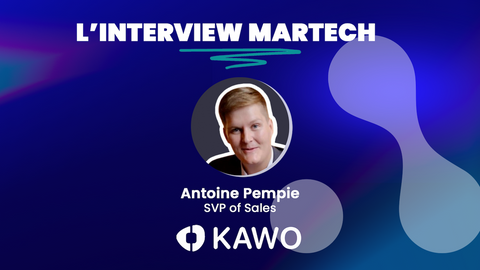What Do the Numbers Really Say About Tool Usage Within Companies? Which Criteria Are Relevant for Evaluating Usage? How Can Saas Advisor Help You Choose the Right Tools Based on Objectives and Create Effective Use Cases?
Similar to our article "3 Myths About Your Marketing Tools," we will rely on data from the latest Productiv report. Productiv is a SaaS intelligence platform that helps companies manage their tool ecosystem (or Tech Stack). In this report, Productiv analyzed several billion data points on nearly 100 million SaaS licenses managed by their platform over the past three years. So, what insights can we draw regarding tool usage?
How to Evaluate Software Usage?
The concept of tool usage first needs clarification. When it comes to a specific software, measuring adoption based on the number of features used can be misleading, especially since SaaS companies continually introduce and add new features.
Productiv chose to measure the number of licenses (seats) per application in the company and the connections. While this method is not perfect, it provides some useful insights. For example, how many licenses are regularly used by the assigned individuals over a 90-day period? The answer: an average of 47% in 2023. In other words, 53% of a company's SaaS licenses are not regularly used! This is quite a striking figure!
This number seems alarmingly high, given that many companies have overlooked it for so long. Once again, looking at the list of the 10 applications with the lowest usage rates in Q1 2023 sheds light on what is really happening.
What Are the Least Used Technological Solutions Within Companies? What About Marketing Technologies?

Let's take a closer look at the solutions present and try to understand why. For each case presented below, there are structurally regular users (power users) and others who use them more occasionally (soft users). The more a tool is intended to meet generic needs and cater to a broader audience within organizations, the more pronounced the non-usage phenomenon becomes.
- The use of GreenHouse, an HR application for tracking job applications, should naturally correlate with recruitment phases.
- Legal and procurement departments frequently sign documents. However, in the company, all employees with a DocuSign license only need it occasionally… A regular usage rate of 55% is almost impressive!
- IT is undoubtedly a regular user of ServiceNow. The rest of the company uses it only occasionally, when they need to make a request to the IT service. It could even be said that most companies would prefer a lower usage rate, as this would indicate fewer requests and thus fewer IT issues.
The fact is that it is not possible to eliminate all these "underused" licenses without disrupting the fundamental value they provide. In reality, they seem to be used exactly as they should be.
Among the least used tools according to the explained method, we find Asana, Jira, and Miro.
The Specificity of Project Management Tools
- Asana is a project management tool designed to help teams organize, track, and manage their work, tasks, and projects efficiently.
- Jira is a project management and issue tracking tool primarily used in software development and Agile project management.
- Miro is a collaborative platform commonly used for brainstorming, remote collaboration, and visual project planning. It is an “online whiteboard” that allows teams to collaborate and generate ideas in real-time, create diagrams, and mockups…
Project management, especially within large organizations, inevitably involves many teams and roles. Project managers will be regular users, but other profiles, such as top management, may only have consultative access to consolidated data (as do teams that contribute occasionally or at a specific project phase and then disengage).
The Benefit of Master Agreements for Scaled Solutions
When licenses are negotiated at the company-wide level for popular applications, it allows for cost reduction. Although a certain number of “seats” may be allocated under such an agreement, it is essentially a fixed-price deal: gain access for your entire company for X euros. What really matters is whether it is worth X euros for you to have this capability across your enterprise.
There is no real waste. You are simply paying for a group of employees to use the product regularly and for the rest of your employees to have the opportunity to use the product occasionally—and perhaps even to be converted to regular users.
Making Software Acquisition a Strategic Endeavor
To avoid any questions about software usage, the selection phase is crucial. It is essential to cross internal needs with the technical and functional possibilities offered by market solutions, involving all stakeholders (business units, procurement, legal, IT, etc.). Our expertise in managing RFPs helps brands anticipate all preliminary questions. We generally categorize these questions into four main areas:
- Does the software functionally meet the expressed needs?
- Are internal resources sufficient?
- What client cases does the software vendor highlight? What support solutions are offered?
- What role will this new tool play in the existing solution ecosystem (data flow, interoperability with other tools, etc.)?
Thinking Use Cases Before Features
To maximize the use and adoption of a solution within an organization, it is also important to define specific and well-defined use cases in advance. As we’ve seen in this article, there are several user profiles (regular, occasional, or one-time users, i.e., “power users,” “soft users,” and “readers only”). Having many occasional or one-time users does not necessarily mean the tool lacks value.
However, we also know from experience that it is important to manage the scaling process. Indeed, a successful use case will have more impact within the organization than a list of features (even if you use only 50% of the tool).
It is therefore essential to define use cases that address well-established business challenges, involving various users, data, and solutions or features. We always incorporate these principles and methodologies into our missions with large international corporations.
Would you like to learn more?
To go further, here is the replay of our May 2023 Webinar : "Our Tips for Managing Your Software Cost-Effectively"





